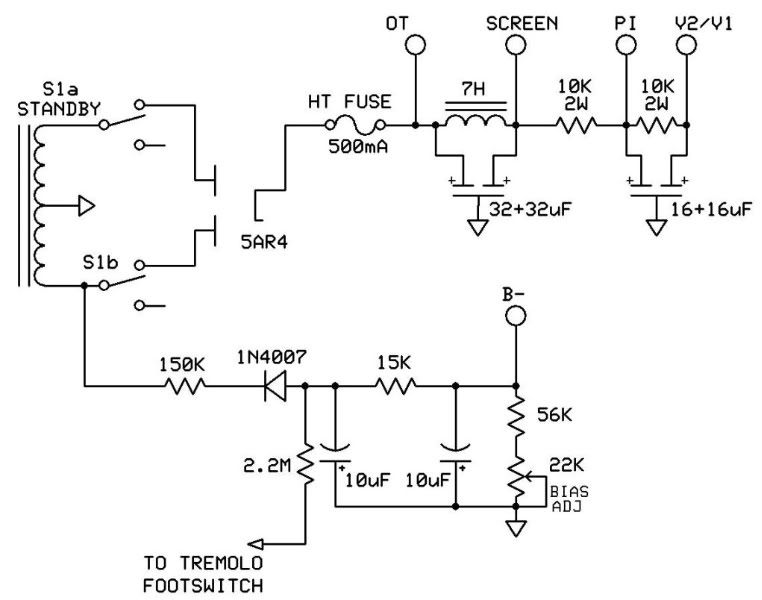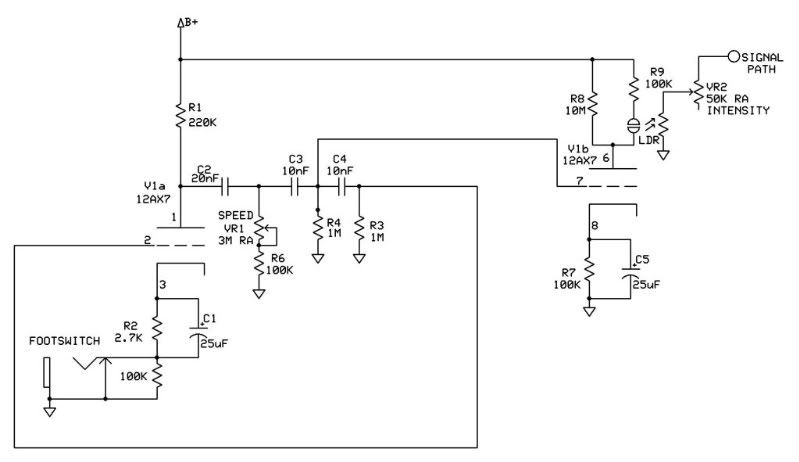Hey guys, I'm an amp builder that primarily deals with Marshall stuff. I've done a Fender AB763 circuit once, but don't have LOTS of experience with them.
I have a couple of questions regarding the LDR coupled tremolo circuit in the AB763 Twin Reverb amp.
1) In regards to the 10M plate resistor in the lamp driver circuit that the LDR/100K resistor hooks up across, would it be OK to use another high value such as a 2.2M or a 3.3M, or would that bypass too much current and lower the voltage drop across it too low to fire the neon lamp?
2) In regards to the speed & intensity pots in the oscillator circuit, what is the reason for the circuit calling for a reverse audio taper pot? Is it absolutely critical that these be a RA taper? How will the trem circuit respond if one were to use regular audio taper pots?
3) Would it be OK to use a 250K pot in place of the normal 50K Intensity pot?
Any input on this would be greatly appreciated.
I have a couple of questions regarding the LDR coupled tremolo circuit in the AB763 Twin Reverb amp.
1) In regards to the 10M plate resistor in the lamp driver circuit that the LDR/100K resistor hooks up across, would it be OK to use another high value such as a 2.2M or a 3.3M, or would that bypass too much current and lower the voltage drop across it too low to fire the neon lamp?
2) In regards to the speed & intensity pots in the oscillator circuit, what is the reason for the circuit calling for a reverse audio taper pot? Is it absolutely critical that these be a RA taper? How will the trem circuit respond if one were to use regular audio taper pots?
3) Would it be OK to use a 250K pot in place of the normal 50K Intensity pot?
Any input on this would be greatly appreciated.



Comment